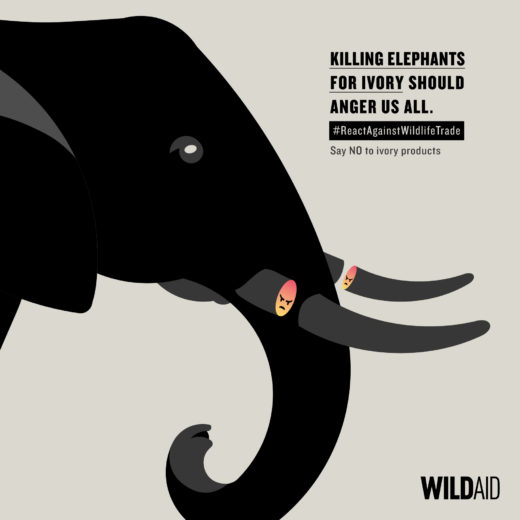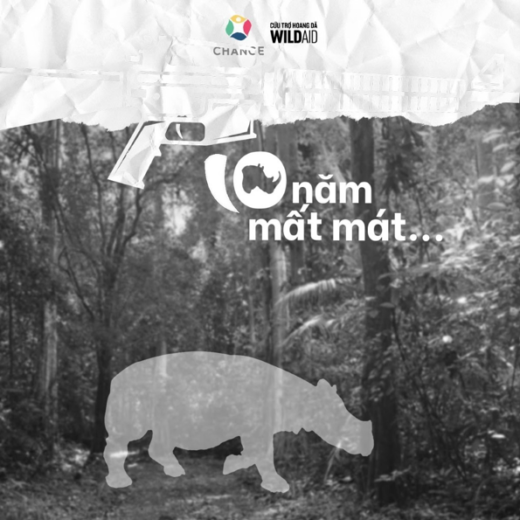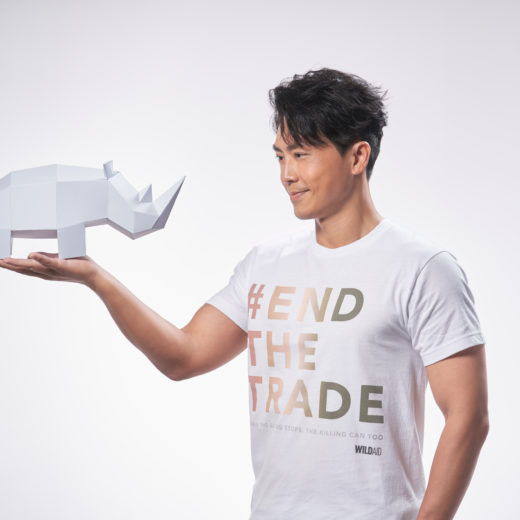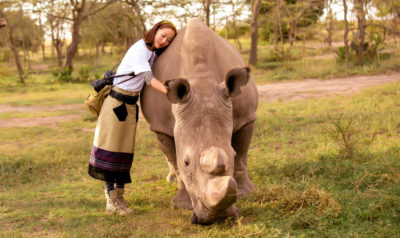
It is with great sadness that Ol Pejeta Conservancy, the Dvůr Králové Zoo and WildAid announce that Sudan, the world’s last male northern white rhino, age 45, died at Ol Pejeta Conservancy in Kenya yesterday, March 19, 2018.
Sudan was being treated for age-related health issues, and for a series of infections. His condition worsened significantly in the last 24 hours; he was unable to stand up and was suffering a great deal. The veterinarian team from the Dvůr Králové Zoo, Ol Pejeta and Kenya Wildlife Service made the decision to euthanize him.
His death leaves just two northern white rhinos on the planet; his daughter Najin and her daughter Fatu, who remain at Ol Pejeta. The only hope for the preservation of this subspecies now lies in developing in vitro fertilization (IVF) techniques using eggs from the two remaining females, stored northern white rhino semen samples from now-deceased males, and surrogate southern white rhino females.
“We at Ol Pejeta are all saddened by Sudan’s death. He was an amazing rhino, a great ambassador for his species, and will be remembered for the work he did to raise awareness globally of the plight facing not only rhinos, but also the many thousands of other species facing extinction as a result of unsustainable human activity,” said Ol Pejeta Conservancy CEO Richard Vigne. “One day, his demise will hopefully be seen as a seminal moment for conservationists worldwide.”
“We can only hope that the world learns from the sad loss of Sudan and takes every measure to end all trade in rhino horn. While prices of rhino horn are falling in China and Vietnam, poaching for horn still threatens all rhino species,” said WildAid CEO Peter Knights.
A dramatic spike in rhino poaching occurred over the past decade driven by consumer demand in China and Vietnam. Since 2013, South Africa has lost more than 1,000 rhinos each year to poachers. Their horns are trafficked to China and Vietnam for use in purported health tonics and carvings. Sudan has served as a global ambassador for rhinos appearing in WildAid rhino horn demand reduction campaign documentaries and educational public service announcements alongside influential personalities from China and Vietnam including Yao Ming, Jiang Yiyan and Phan Anh.
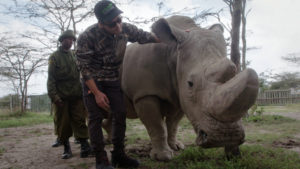

Vietnamese MC Phan Anh was deeply saddened upon learning of Sudan’s death. “Sudan, you have left us,” said Phan Anh, “But your death will not be meaningless. It will be a wake-up call to the public, so everyone will join hands to protect wildlife’s right to live. Now, not later.”
With the risk of extinction for the northern white rhino, there are fewer than 30,000 wild rhinos remaining among 5 species, including about 20,000 southern white rhinos mostly in South Africa, about 5,000 black rhinos in southern and eastern Africa, roughly 3,500 Indian one-horned rhinos in Nepal and India, fewer than 100 Sumatran rhinos, and an estimated 60 Javan rhinos.
How did we get to this point?
The poaching crisis of the 1970s and 80s, fueled by demand for rhino horn in Traditional Chinese Medicine in Asia and dagger handles in Yemen, wiped out the northern white rhino populations in Uganda, Central African Republic, Sudan and Chad. The last remaining wild population made up of 20-30 rhinos in Garamba National Park in the Democratic Republic of the Congo succumbed to fighting in the region during the 1990s and early 2000s. By 2008, the northern white rhino was considered by most experts to be extinct in the wild.
In 2009, the last four northern white rhinos – two males and two females – were moved to Ol Pejeta from Dvůr Králové Zoo in the Czech Republic, with support from Fauna & Flora International. It was hoped that the climate and rich grasslands of the conservancy, which are similar to the native habitat of this subspecies, would provide them with more favorable breeding conditions.
On arrival at Ol Pejeta, the four were placed under 24-hour, armed surveillance, and fed a supplemented diet. However, despite the fact that they were seen mating, there were no successful pregnancies.
In early 2014, plans to introduce a male southern white rhino to the two female northern whites got underway in the hopes that if breeding was successful, the hybrid offspring would at least conserve some of the northern white genes. Again, this proved unsuccessful. Tests later revealed that neither of the females was capable of natural reproduction, and that only one was fertile enough to conceive artificially. The death of the other northern white male, Suni, of natural causes in October 2014, further emphasized the need to come up with alternative solutions, and fast.
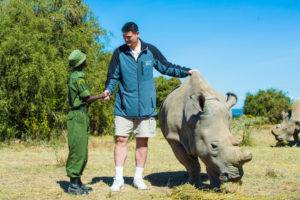

What’s next?
With options running out, scientists are attempting to develop “artificial reproductive techniques” including IVF to rescue this subspecies. To that end, Ol Pejeta Conservancy and Dvůr Králové Zoo are now partnering with IZW Berlin, Avantea Cremona and Kenya Wildlife Service to try and conduct the first-ever procedure to safely remove egg cells from remaining females, fertilize these with semen previously collected from northern white males, and insert the resulting embryos into female southern white rhinos acting as surrogates. This has never been done before in rhinos, and does not come without risks.
The estimated cost of IVF – from the development of the method, to trials, implantation and the creation of a viable breeding herd of northern whites – could be as much as US$9 million. Yet this is the hope for preserving an entire subspecies. Ol Pejeta and Dvůr Králové Zoo are asking supporters to donate toward this campaign in memory of Sudan, and help us raise the funds needed before it’s too late. Visit http://donate.olpejetaconservancy.org/projects/sudan.
Stay in touch and get the latest WildAid updates.
SIGN UP
